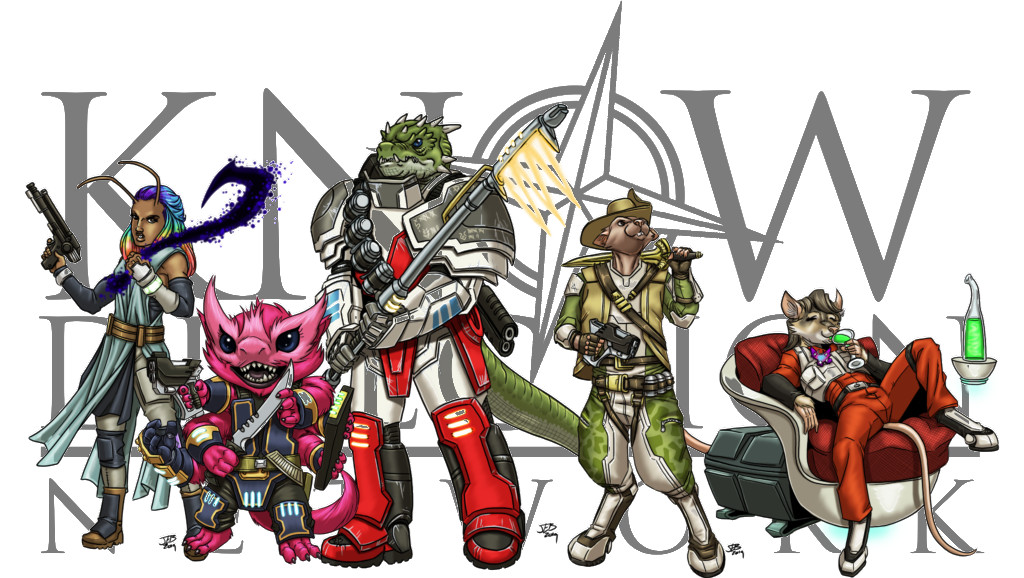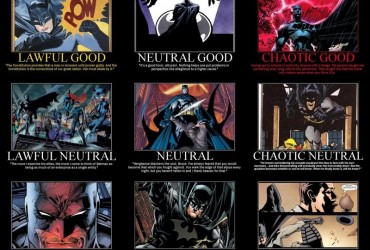Today I examine some of the differences I’ve noticed when writing an Organized Play scenario as opposed to writing an Adventure Path volume.
Scope and Variety
Obviously, the amount of content to cover is a huge difference. Scenarios tend to clock in at 10,000 to 12,000 words whereas AP volumes can be in the 30,000 to 40,000 word ball park. That’s a lot more creative effort to put forth all at once (approximately triple) and as an author you can sometimes get fatigue when trying to come up new and interesting encounters. For a scenario, “oops, all undead” is ok… but in an AP volume that won’t fly.
Try breaking your encounter types down into archetypes: face off, fight with a hazard or environmental complication, chase, primarily ranged encounter, PCs vs solo monster and PCs vs a bunch of trash monsters. You can also look at the types of creatures you’re putting into the adventure. Have you included any outsiders? oozes? constructs? aberrations? How many bestial creatures vs humanoids with class levels have you included? Try and look at the overall mix and see where you can change something up to give the PCs a new experience as their fighting through the hordes of danger you’re putting in their path.
For example, if I’m writing an undead heavy adventure, I’ll want to look for excuses to put non-undead creatures in for them to face. This gives them a breather and ensures they don’t rely to heavily on anti-undead items, spells, and tactics. A flesh and blood necromancer is an obvious choice, but what about an ooze that eats the scraps the undead leaves behind? Insert an aberration that is also working against the undead, but doesn’t see the PCs as allies. You could introduce humanoid opponents dominated by a vampire; now the PCs need to decide to kill them or try and rescue them (a much harder proposal).
Changing up the environment helps as well. Don’t just have graveyards and catacombs, but maybe the necromancer is enjoying themselves in a fancy cigar lounge when the PCs track them down. Perhaps an alliance with a local diplomat has them on a political intrigue portion of the adventure with lots of roleplay and social skills at work.
Encounters
The encounter building itself is really different and both pose different types of challenges.
Encounter Strength and Composition
In organized play you need to come up with an encounter idea that works across two different subtiers AND has room for a 4-player adjustment. That means finding multiple creatures that fit the bill and put the CR range in the same spot relative to the assumed APL. If you’re writing a level 3–6 scenario, you’ll need a CR 5 encounter that’s scale-able down to CR 4 AND a thematically similar encounter for CR 7 that’s scale-able down to APL 6. Did I mention the adjustments need to be simple and easy to implement on the fly?
THEN there’s the new Pathfinder 2 challenge point system that has a very flexible way of scaling encounters. I’m fairly happy with its potential, but it makes things MUCH more complicated to write and balance. The author now needs to look at several different APLs based on level and the points they generate to determine how tough this fight is going to be and what their XP budget is to balance everything. Meanwhile, don’t have too few or too many creatures. Too few and the creatures will die to action economy or be so powerful that they might one-shot the lower level PC tagging along. Too many and the GM now has potentially 7 PCs and 6 creatures to keep track of, plus a complex trap; that’s a LOT of creatures taking turns and can slow down combat too much.
In an AP Volume, you just need to say “There are 4 orc warriors. It’s a Moderate 3 encounter.”
Experience Rewards
Opinion: the XP system in Pathfinder 2 is kind of a giant pain. It does a lot of great things, like let lower level PCs catch up and let the PCs quickly adjust to where they need to be for the adventure path. They skipped a section with divination and are behind on XP? That’s ok, they’ll catch up because the next section’s Low encounters are granting them Moderate experience, so they’ll level up in no time. They’re way ahead because of some random encounters? That’s ok, the next several encounters will earn them fewer experience points so they should stay on track.
But how do you balance all of those? I had to make a chart. I made some cheat-sheets giving me how many of each level creature I could include to make a Low, Moderate, Severe, and Extreme encounter. It helped encounter building go MUCH more quickly, but it’s sort of ugly. Want to see?
| Low | Moderate | Severe | Extreme |
|---|---|---|---|
| 3x (APL-2) | 4x (APL-2) | 4x (APL-1) | 4x (APL) |
| 2x (APL-1) | (APL) + 2x (APL-2) | 3x (APL) | 2x (APL+1) + (APL) |
| (APL) + (APL-2) | 2x (APL) | 2x (APL+1) | (APL+2) + 2x (APL) |
| (APL+1) | (APL+1) + (APL-2) | (APL+1) + 2x (APL-1) | (APL+3) + 2x (APL-2) |
| (APL+2) | (APL+2) + (APL) | 2x (APL+2) | |
| (APL+3) | (APL+3) + (APL) | ||
| (APL+4) |
Dizzying isn’t it?
On the scenario scale this isn’t too bad. You have to do this for 4 to 5 combat encounters. For an AP volume, you need to do this for about 14-16 encounters WHILE also having a variety of encounter difficulties (mostly Low and Moderate, a few Severe, and maybe an Extreme if there’s a lot of telegraphing that THIS PART IS REALLY HARD). Not only do you need variety, but you’ll want to balance the experience of the entire AP volume so that the PCs level up at approximately the right moments.
In a scenario you just need 4 to 5 encounters and PCs level up every 3 scenarios, so no nit-picking on exactly how much XP.
Loot
See the above discussion on balancing? Ok, apply that to loot. Organized play has these nice treasure bundles where they spread the loot out and then just count bundles and multiply at the end of the scenario. Boom: that’s how much gold each PC gets. For an AP, you need to divide what’s treasure they’re likely to sell for 50% or consume (magic weapons, boots, potions, etc) and what is worth full value (coins, gems, art pieces, etc). Then you need to ensure that your 4 PCs (because AP volumes always assume 4 PCs) get a good mix of treasure. You need a good balance of weapons, armor, wands, scrolls, potions, caster-focused items, melee focused items, ranged focused items, etc. Make sure everyone gets something fun to play with, or you end up with the fighter that has 3 powerful martial weapons and the sorcerer who is wishing for a magic staff to drop.
In scenarios, as long as the treasure bundles add up, you’re good to go. The PCs will buy their own equipment.
What Ifs and Side Quest Hooks
This is one place where they’re fairly similar. It’s good to put little hints of information in your adventure, even if you’re not going to follow up. Give the GM enough information to get them started on some tangent side quest, but it doesn’t have to be 100% fleshed out.
The difference is that in a scenario, the Organized Play development team will either use it or drop it at their digression. Because of the episodic nature of these adventures, the PCs aren’t expected to follow them up, so a little hint is fine. Give the developers and the players something to tickle their imagination and see if it goes somewhere. If not, that’s fine. In an AP volume, you need to ensure that if you say “NPC left for this nearby mining town with a labor shortage,” that you give a bit more information about what that shortage is, why they left, and how that relates back to the PCs if anything. Is this an opportunity for downtime? Is this just to get the NPC out of the picture for plot reasons? If so, how long are they gone? Are they able to come back if they get an urgent sending from you? Provide the GM some structure for them to take it. If you include blank space for them to fill in, mention that and give them a few hints: “It could be attacked by kobolds, it could be a nasty disease putting the workers out of commission, it could be an undead curse, use whatever works best for your party.”
Conclusion
Both OP scenarios and AP volumes have some very different challenges and things to consider when laying out your writing. Certainly identify these challenges early on and devise a strategy to take on the hurdles. Doing this in outline is FAR easier than going back and changing things once you’ve written several thousand words.






